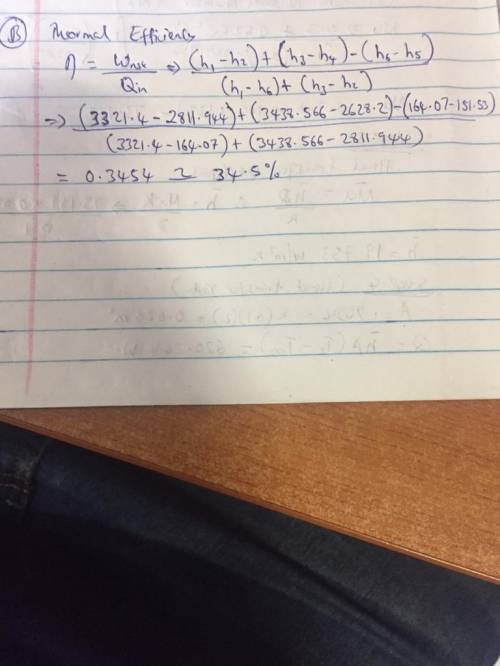
Engineering, 08.03.2021 19:50, F00Dislife
Water is the working fluid in a Rankine cycle with reheat. The turbine and the pump have isentropic efficencies of 80%. Superheated vapor enters the turbine at 10 MPa, 480 °C, and the condenser pressure is 6 kPa. Steam expands through the first-stage turbine to 0.7 MPa and then is reheated to 480°C. Determine for the cycle
(a) the rate of heat addition, in kJ per kg of steam entering the first-stage turbine.
(b) the thermal efficiency.
(c) the rate of heat transfer from the working fluid passing through the condenser to the cooling water, in kJ per kg of steam entering the first-stage turbine.

Answers: 3
Other questions on the subject: Engineering

Engineering, 04.07.2019 18:10, danksans7011
The mass flow rate of the fluid remains constant in all steady flow process. a)- true b)- false
Answers: 1

Engineering, 04.07.2019 18:10, viicborella
Steel is coated with a thin layer of ceramic to protect against corrosion. what do you expect to happen to the coating when the temperature of the steel is increased significantly? explain.
Answers: 1

Engineering, 04.07.2019 18:10, bckyanne3
Afull journal bearing has a journal diameter of 27 mm, with a unilateral tolerance of -0.028 mm. the bushing bore has a diameter of 27.028 mm and a unilateral tolerance of 0.04 mm. the l/d ratio is 0.5. the load is 1.3 kn and the journal runs at 1200 rev/min. if the average viscosity is 50 mpa-s, find the minimum film thickness, the power loss, and the side flow for the minimum clearance assembly.
Answers: 1

Engineering, 04.07.2019 18:10, Tyrant4life
Draw the engineering stress-strain curve for (a) bcc; (b) fcc metals and mark important points.
Answers: 1
Do you know the correct answer?
Water is the working fluid in a Rankine cycle with reheat. The turbine and the pump have isentropic...
Questions in other subjects:


Business, 03.03.2022 14:00





Medicine, 03.03.2022 14:00


English, 03.03.2022 14:00







